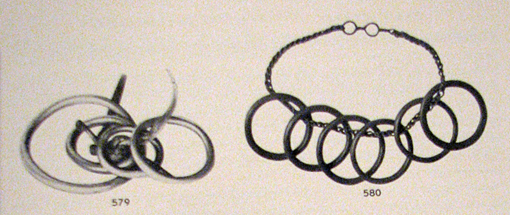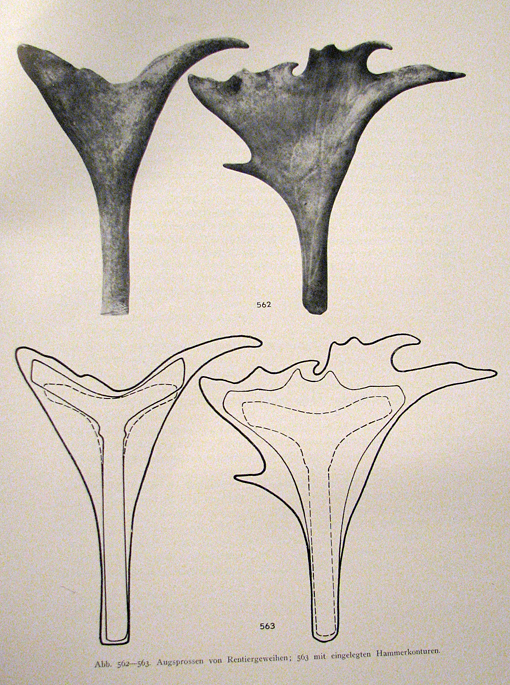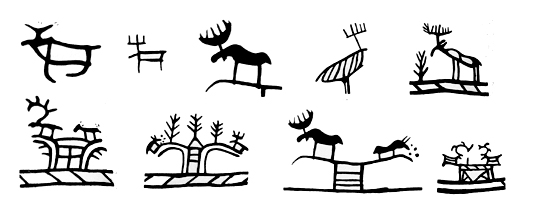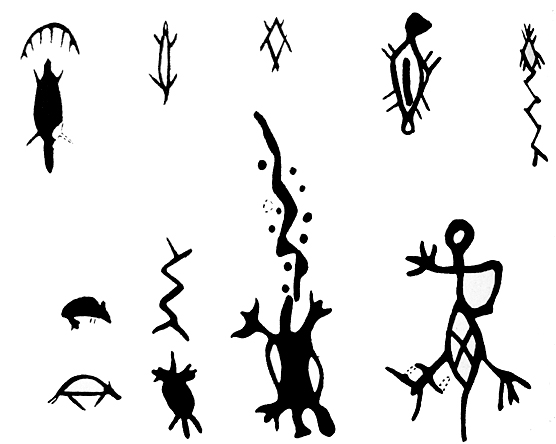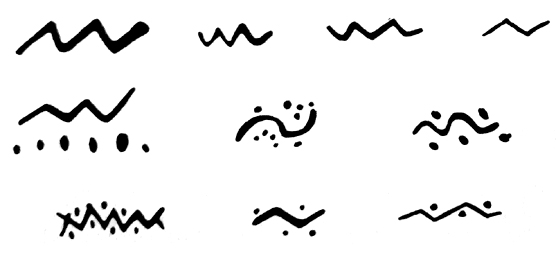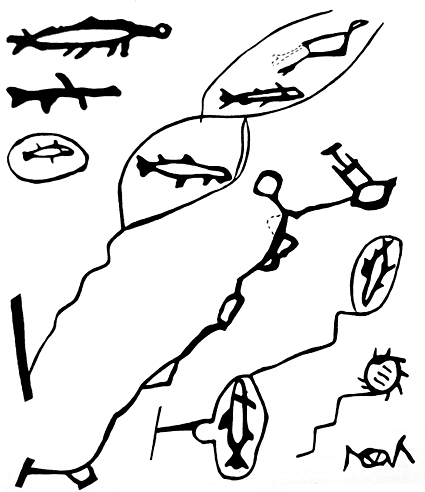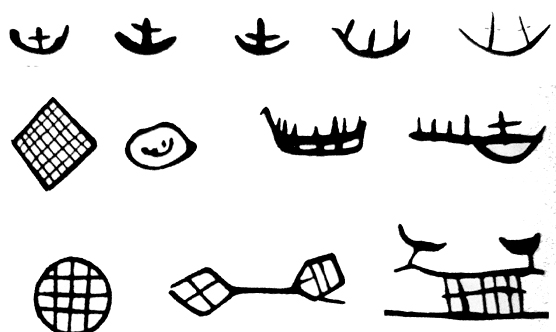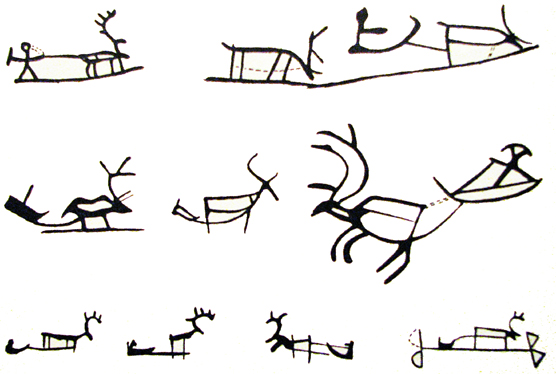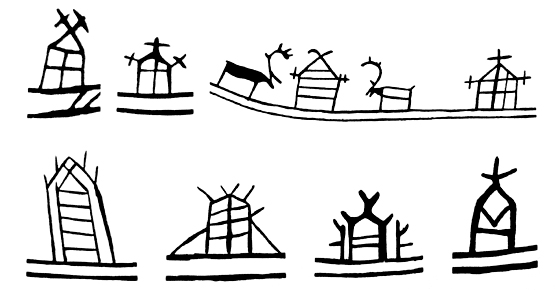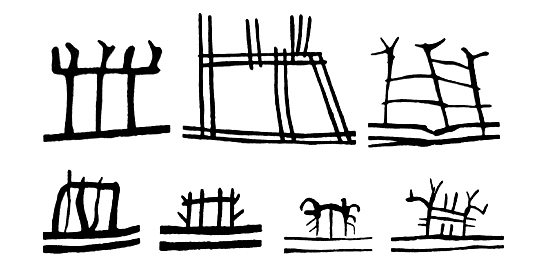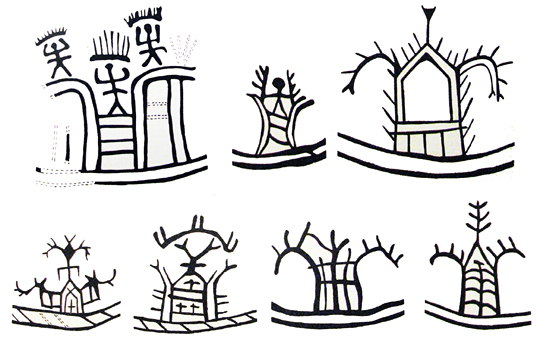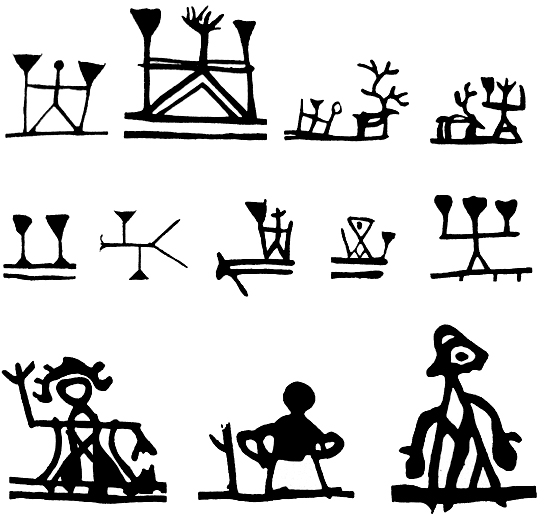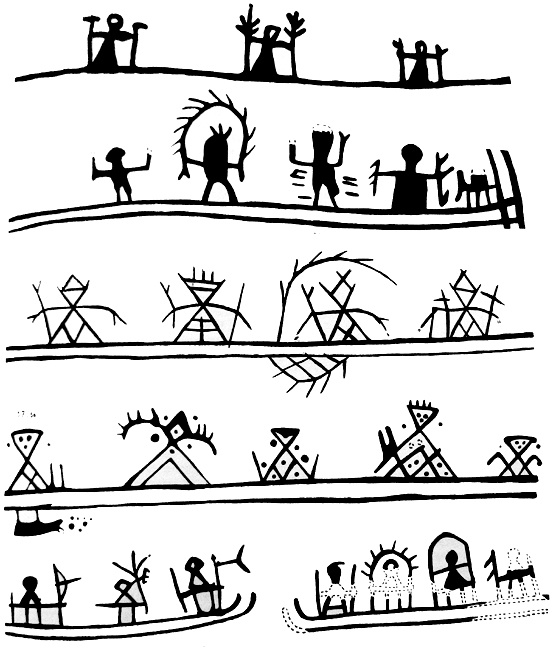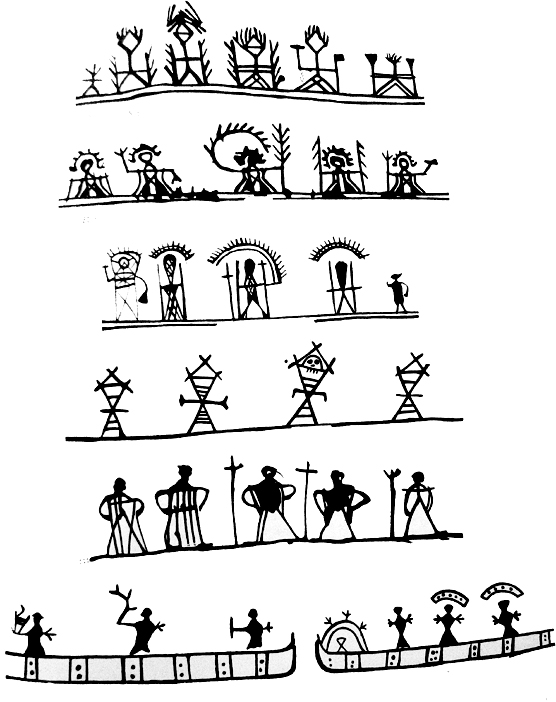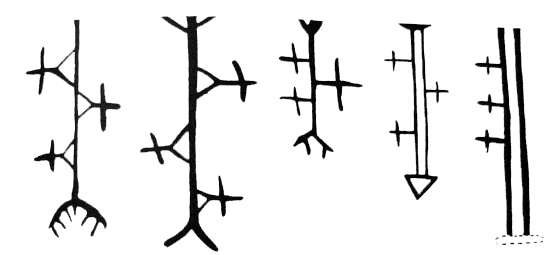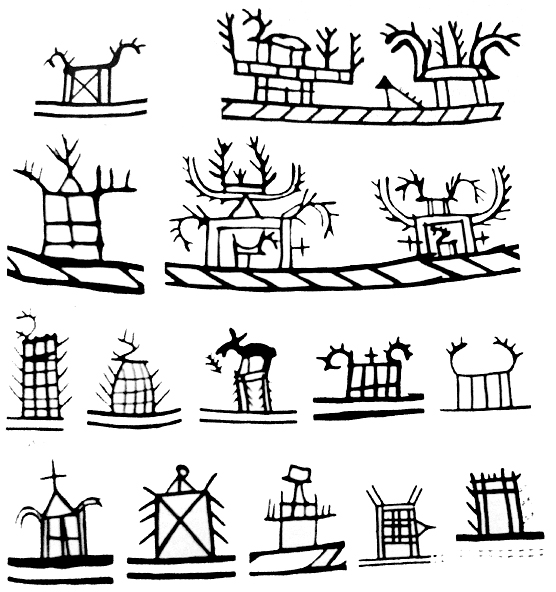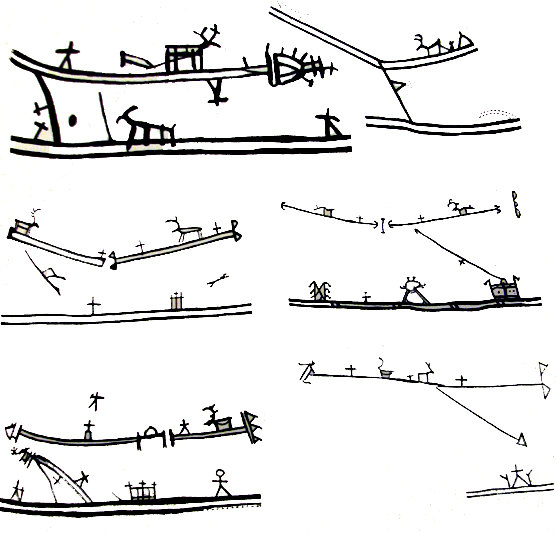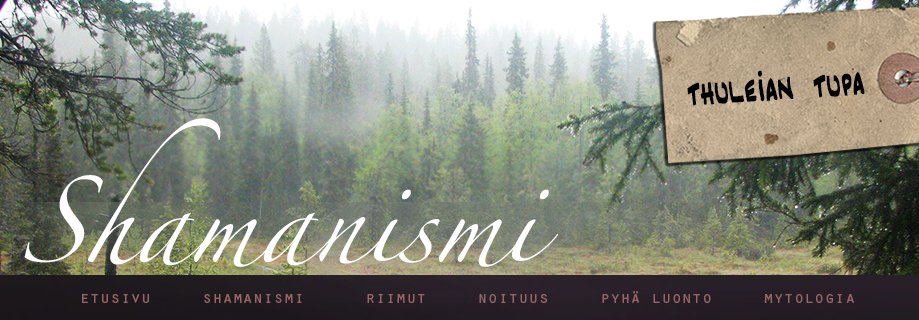
|
||||
|
Shaman´s drum symbols in Scandinavia Artikkeli suomeksi | Symbolen auf Deutsch Many different cultures have had shamanistic drums and ritual drums. Just a few cultures have paint their drums. Sami people from Scandinavia used to paint symbols and also some Siberian tribes (Yakut). However, Fenno-Ugric Khantys and Mansis did not have pictures in their drums. Tengrism was a folk religion in the area of Turkey and Mongolia. Middle of the drum is god Tengri. Abowe his arms is heaven and the upper world, and below is the realm of men and the natural world. Native Americans: Different tribes have different traditions about the drum and how to play it, but the basic construction is very similar in most tribes: a wooden frame or a carved and hollowed-out log, with finely tanned buckskin or elkskin stretched taut across the opening by sinew thongs. Traditionally American Indian drums are large, two to three feet in diameter, and they are played communally by groups of men who stand around them in a circle. Shaman´s drums in Scandinavia There are about 70 old drums in Scandinavia, which have survived from the old days. The map shows where the drums have been found. All drums are portrayed and described in Ernst Manker´s book Die Lappische Zaubertrommel I – II. Manker was a Swedish ethnographer. There were also hundred of older drums, but they all burned in the great fire of Copenhagen in 1795. Older drums were collected from northern Norway and Finland. Today we have only 3 old drums from Finland, which have survived. Two of them are from the area of Kemi, southern Lapland and one from Utsjoki, northern Lapland. The drums of Norway and Sweden have usually sun in the center of the drum (heliocentric drum). Finnish and other northern Lappish drums have drums with three layers. Some drums have both the sun and the layers and some drums have a world tree or world pillar in the middle of the drum.
The map shows where the old drums have
been found (from Manker´s book) Different types of drums Heliocentric drum Southern Sami Drum, the sun in the middle:
Finnish drum: World with three layers The reddish colour is from alder tree (die Erle). Some of the younger drums also had a map from the real world: Norway, Sweden, Finland, all the reindeers, villagers, church etc. It was used as a tool for forecasting the future. The drum's front side with the picture is for the people and public, but the inner/other side is for the shaman. There are all the totem artifacts, gifts from the spirits and secret symbols. Building of the new drum could last many years. Pointer for forecasting (Manker´s book):
Drumsticks, hammers (Manker´s book)
People
Symbol of the witch, noide-dirre and a witch/shaman or a person who is spellbound:
The Drum and the shaman/witch, noide, noidde
Elk
Dog
Wolf
Animals: fox, marten, weasel, otter
Bow as a weapon and magical tool
Birds
Snake
Reindeer Reindeers in holy hill, Passevare and reindeers near camp/hut and fence:
Fish and fishing equipments
Boats and fishing equipments
Boats and ships
Sun, moon, stars
Sun in the middle of heliocentric drum
Lappish hut, kota
Storage for food, njalla
Storage for food, aitta
Storage for meat (luovve)
Ruto or Rota, bringer of the illness
Figures with trees, maybe gods/goddesses?
Symbols of sky god Radien
Tiermes or Horagalles, god of the thunder and his symbol doublehammer
God of the wind Bieggolmai (Bieggagallis)
Gods (Radien) with branch or halo
Groups of gods
Akka-goddesses
Men of the holy days (or friday-saturnay-sunday-men)
Seita, holy place of offering
Jabmeaimo
Groups of symbols in the
drum
Thuleia
Huom! Sivuston tekstit ja kuvat ovat tekijänoikeuslain alaisia. Ilman lupaa kopioiminen on kielletty. Lyhyitä lainauksia tehdessä on kohteliasta mainita lähteenä sivuston nimi.
|
|||
|
|
||||

|
||||





